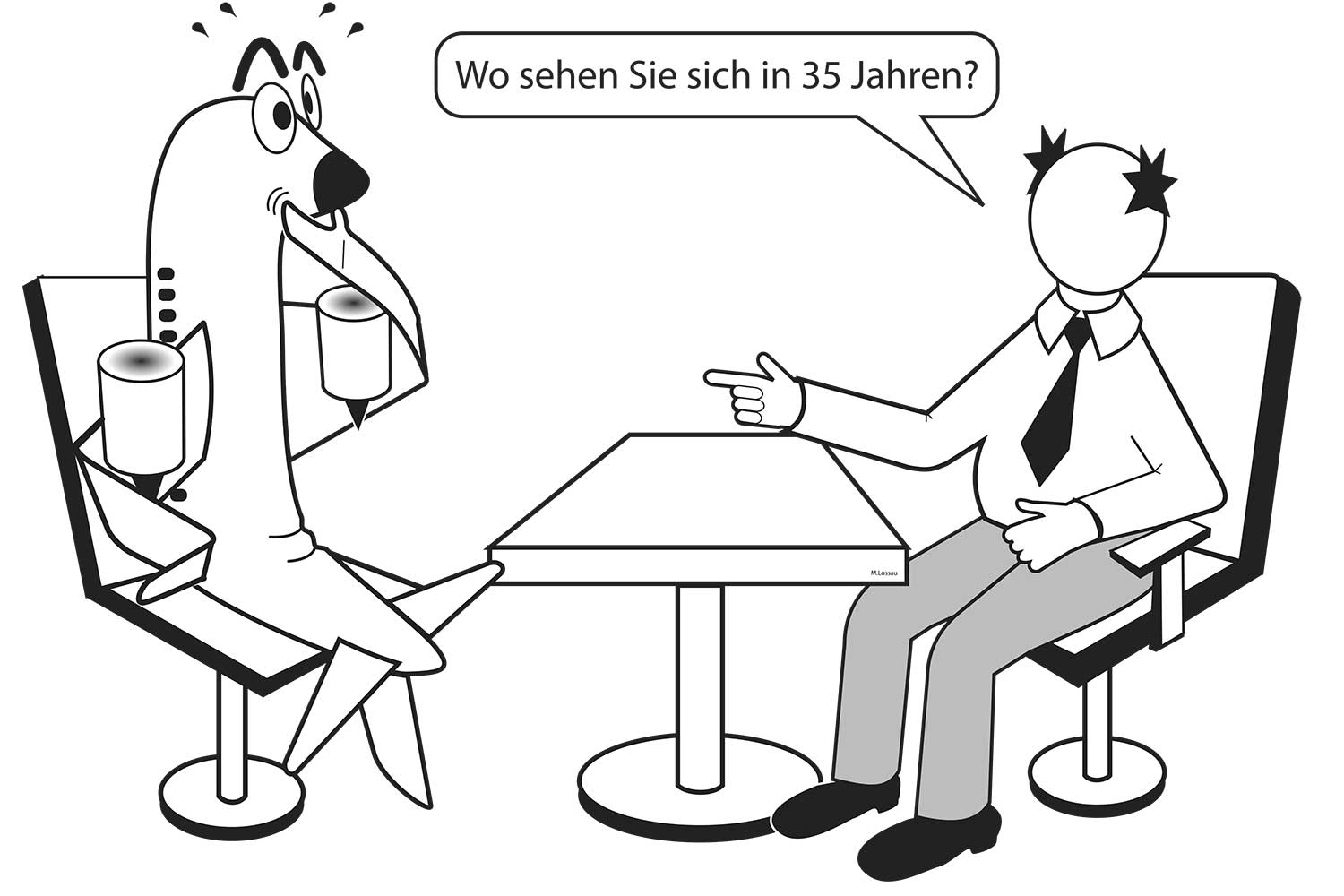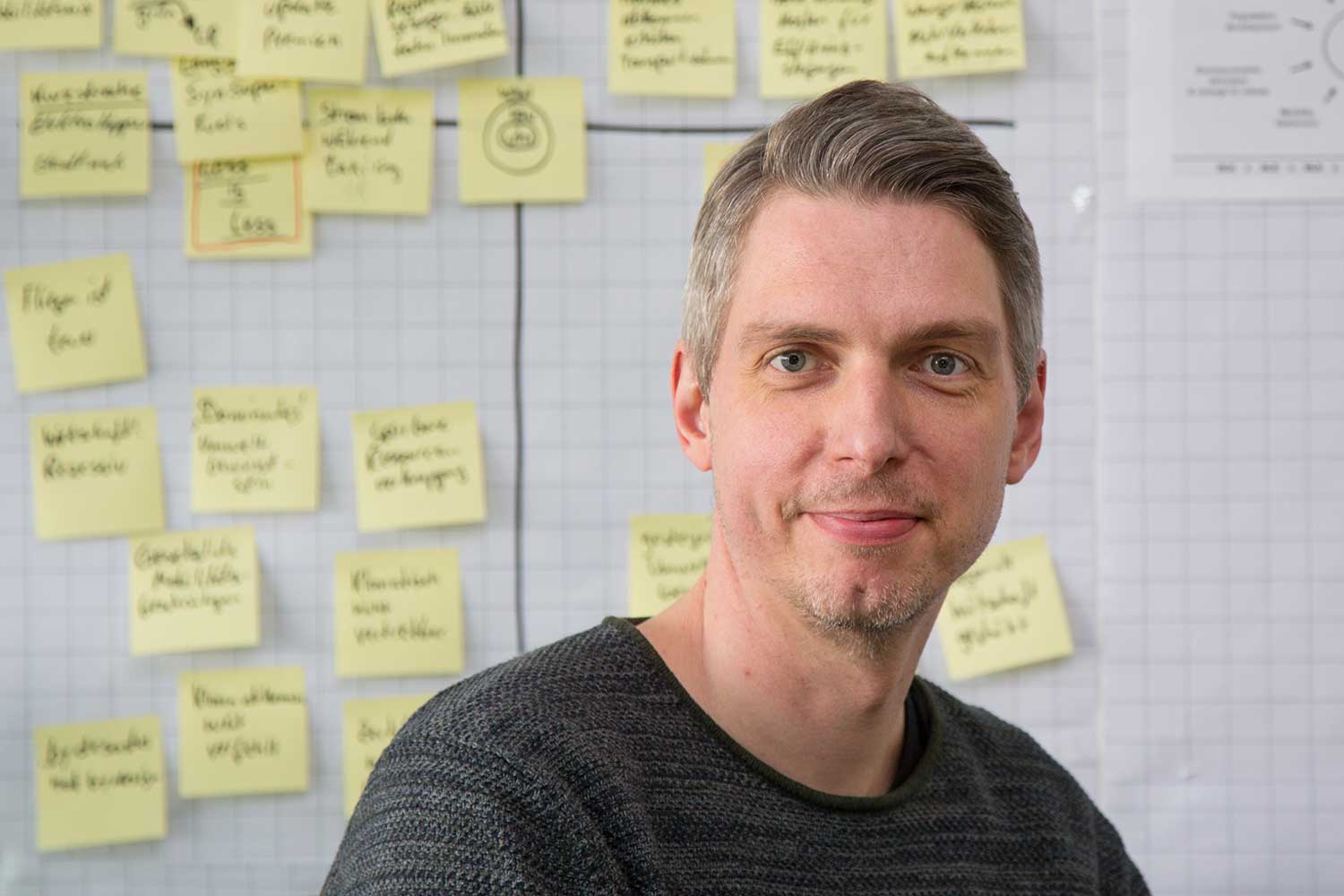Keeping the travel bug in mind Focus on Research: Energy Transition in Aviation
Three questions for Matthias Lossau, Industrial Designer at the Institute for Transportation Design of Braunschweig University of Art (HBK)
Mr. Lossau, as part of the Energy System Transformation in Aviation research project, you are developing future scenarios for aviation. Do you have any idea what air travel will be like in 2050? Will we zoom noiselessly from city airport to city airport in electronic jets? Or will flying be a privilege enjoyed by the well-to-do, once scarce resources cause ticket prices to sky-rocket?

“Where do you see yourself in 35 years?”. Picture by Matthias Lossau. Credit: Matthias Lossau/TU Braunschweig
When I think of the travel bug that bites us all every now and then, I prefer the vision of the electronic jet. It’s very hard to say what changes we will see in aviation by the year 2050. The scenarios we create in the field of mobility research are not predictions; they are merely possible development trajectories. They help us formulate an idea of what the future might look like. Scenarios stimulate discussions among researchers and help scientists make decisions, like which technical concepts appear to be of use.
You are working in a team with engineers from different disciplines. Do you, as a designer, have a different perspective on the research topic?
Yes, and that’s considered a benefit on an interdisciplinary team. We conduct mobility research not only from an engineering perspective, but also with a view to design, cultural and sociological aspects. In short, it’s not only about developing innovative propulsion systems, but also about keeping the travel bug in mind. Soft factors such as emotions and needs are important aspects of any scenario. Just look at the comeback of the vinyl record: despite being able to download music files to their mobile phones so easily, young people still go out and buy a record player so they can listen to their music on vinyl. Why? Because listening to music becomes an experience that touches more than one sense: sliding the record out of its sleeve, placing the needle in the groove, the crackling and rustling, and so on. This ritual triggers emotions that an MP3 file apparently cannot. All of these non-quantifiable factors should be incorporated into any systemic examination.
What does this mean for mobility in aviation?

Matthias Lossau, Industrial Designer at the Institute for Transportation Design of Braunschweig University of Art (HBK). Credit: Jonas Vogel/TU Braunschweig
When we develop future scenarios for aviation, in addition to technical, economic and ecological aspects, we also need to consider people’s longings with regard to flying. For example, we can hold video conferences that allow us to easily meet with business partners anywhere in the world. We don’t even have to leave our office or travel for that. One might think that demand for business-related air travel is declining. It is not. Business travel is booming. Maybe this is because people like to look their business partners in the eye during negotiations. Or because people like to escape from the office routine. Decisions of this kind, where we are guided by emotions, are for the most part subconscious. As a designer, I want to understand and try to predict the subliminal needs that people might have in the future.
Text: Nicole Geffert

